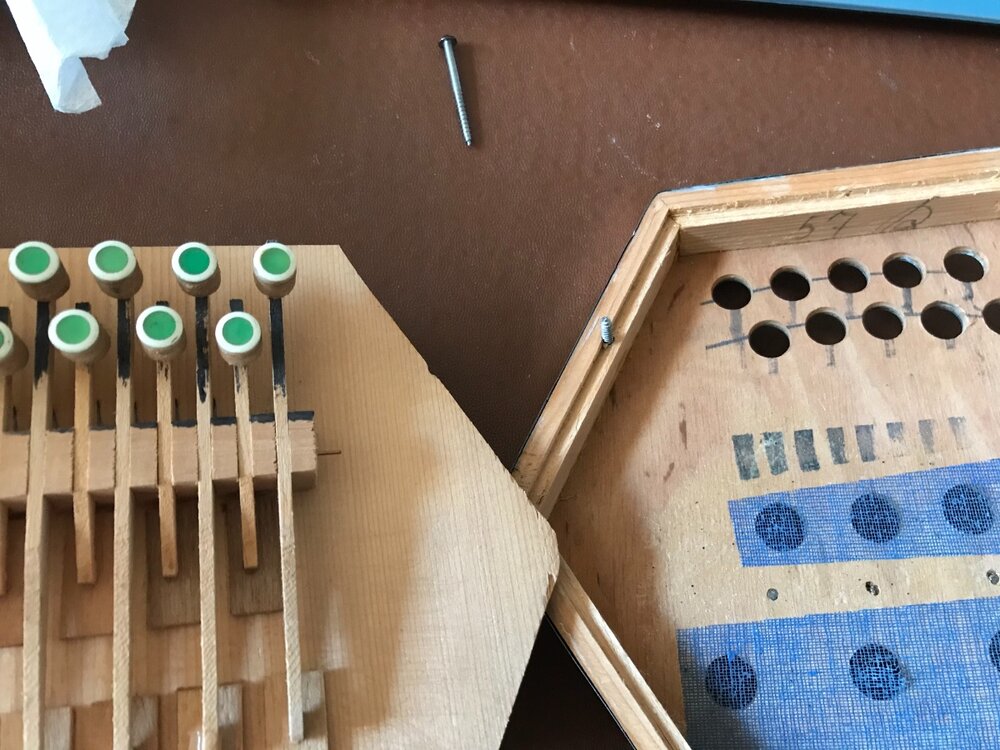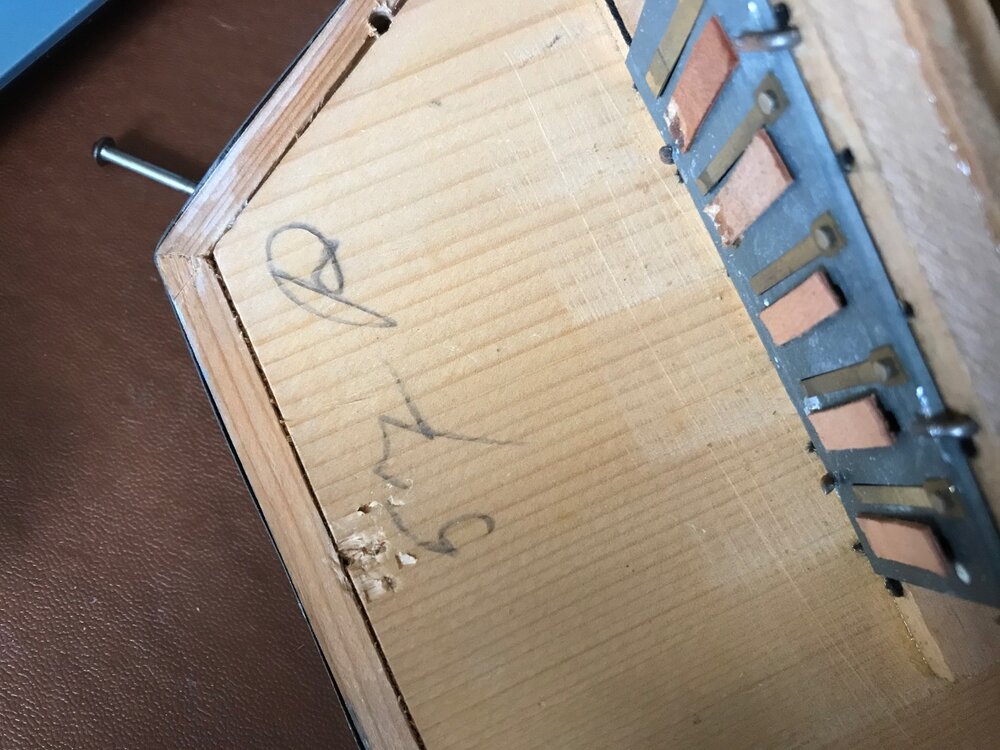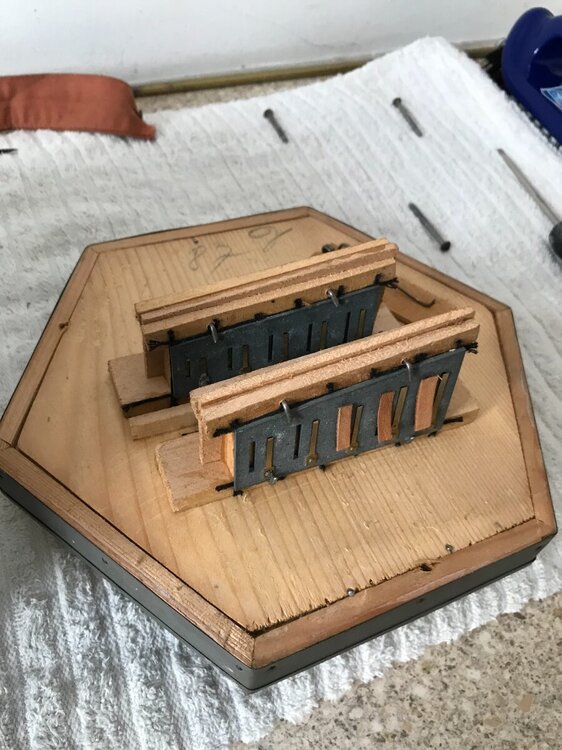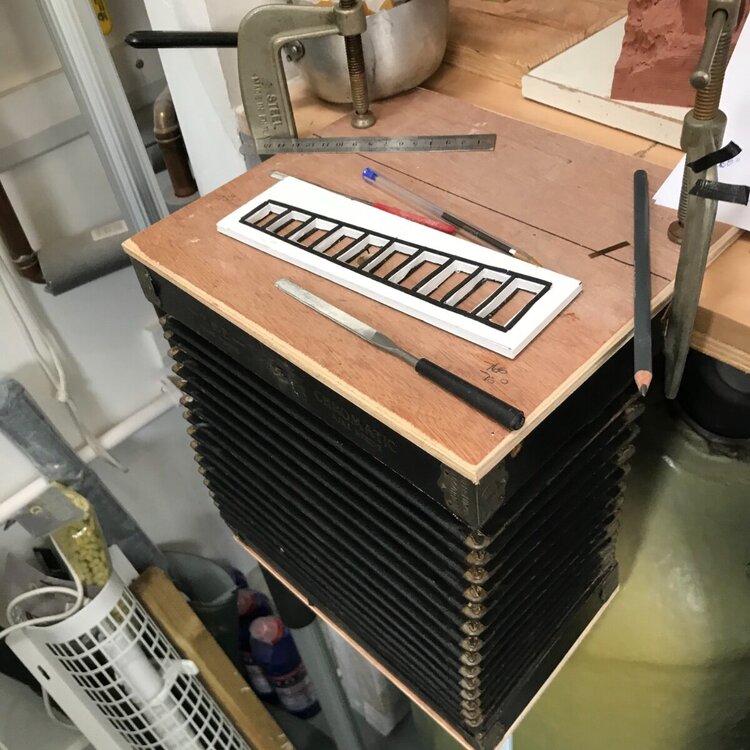-
Posts
7 -
Joined
-
Last visited
Profile Information
-
Gender
Male
-
Interests
Irish Music, Making and Repairing, Stone Carving, Bronze Work, Blackwood Flute, Whistle
-
Location
Manchester, UK.
Recent Profile Visitors
The recent visitors block is disabled and is not being shown to other users.
JohnPeter's Achievements

New Member (1/6)
-
I know this is a bit of a strange request but does anybody have any spare tinware bellows frame “corners” for an old Klingenthal concertina. I attach a couple of picture showing the sort I am after. I need to get a match with the existing if possible. Happy to take bellows frames, bellows etc to get a few matching. I need six. The concertina in question was owned by my great grandmother and I’m trying to bring it back to life. Thanks. John Size: 29mm corner to nail. 9mm wide
-

Would appreciate help with age/maker of this concertina ...
JohnPeter replied to JohnPeter's topic in Concertina History
Many thanks for the responses. Much appreciated. I had a chance to open it up again yesterday and have another look around. I also reset a couple of reeds while I was at it and it now sounds even better! Paul, I see what you mean re the reeds. The metallurgy is different to the heavier accordion reeds I have I think from the same era. They are finer and much more akin to those in say a blues harp. The accordion ones are quite industrial! Stephen, thanks for noticing those marks. I too was hopeful but ... on inspection ... it is ink overspill from when the maker was assembling. It must have come off the key levers. See photos. What is there though is what I take to be the builders mark in pencil and some brilliant freehand marking out of the button holes. Thanks for the manufacturer name (Rauner) as it lead me to the history. I have just read “The Life and Times of a Concertina” chapter 6 (a few times!) A cracking read and really interesting in terms of product placement! -

Would appreciate help with age/maker of this concertina ...
JohnPeter replied to JohnPeter's topic in Concertina History
Hi Paul, thanks for the reply. I thought it might be from that region. I have a German button accordion that has a similar feel in terms of construction. I wish I could claim that I had installed those buttons 🙂 I think it has been worked on before though so it might have been last time round. It had quite a bit of use in its lifetime. It was played a lot! The way the reed plates are fitted is interesting. They are sealed with light string and heavier turn pins. The accordion has thinner pins and it waxed so I did wonder if this indicated an earlier design. -
I was given my Great Grandmothers concertina recently which I have really enjoyed rebuilding. It’s nice to hear it play again. Can anybody help me with its age or possible maker? I have attached a couple of pictures. It’s a GD Anglo and it has 2 reeds per note separated by an octave. There are no makers marks. I would really appreciate any help. I know it has been around for a long time and it would be nice to put it in context with her life. Is it early or mid 20th century? Thanks
-
Picture of improvised tuning table below. You can see the white reed plate mount on top. Made from some foam board I had lying around. The complete reed plate goes on top of this mount over a single hole in the table. The mount is sealed with fine sticky backed foam tape top and bottom (the black line). This gives a pretty even pressure/flow rate across the apertures and allows a full 20 note plate to be sounded/balanced. Same done for concertina. I terms of tuning you will have read all the advice (all good) but just in case it helps here is what I did ..... excuse the nerdy summary but it’s the way my mind works: Determine all current actual and target frequencies i.e map each plate and mark up. It’s really important as I nearly messed up! It does get confusing otherwise ... push pull etc.) To do this: Reed plate on mount Move from one aperture to next Sound all in turn and map actuals. (The Peterson software is good as you can see the harmonics sort of) Turn over and repeat (push/pull) Then check all against the note frequency table. Set targets against actuals to suit key etc. NB At this point I didn’t really write things down well enough and had to repeat the whole process (one of my big learning points) Also when doing this I realised how important the gap is from reed to plate. Some reeds didn’t sound initially and with a gentle twang and adjustment (careful bending) they came to life. It made me realise how important the gap is in terms of ease of sounding a note. Once I had got each reed tuned to pitch then a lot of the “tuning” was getting the notes in balance in terms of “attack” I.e ease of triggering vibration. They all varied. Balancing them made the whole concertina more balanced. The gap does need to be the thickness of the reed. By the way a scalpel is invaluable. In terms of tuning the reeds. You do need a thin shim to support the reed when filing/scratching. I used an old bass reed and filed it down. Tuning is pretty straight forward: Sound the reed check how far you have to go and which way Lift off and lay on solid top (edge of sounding table) Shim in File/scratch (base of reed to lower frequency - tip to increase) Keep the file really flat on the reed at the base. Always file away from the rivet/bolt. Sound reed ... Repeat .... repeat .... repeat .... slowing down for a perfect landing ..... on pitch 😊 After that it just monotonous ...... but ..... also pretty fantastic when the reed hits the perfect note. You will find that the accordion reeds need quite a bit of filing. I used a flat needle file and a diamond impregnated riffler for final adjustment. It just takes time and patience. Anyway I hope that helps. The good news is that once you can replace reeds on these plates if you damage one or mess up you can just pop a new one in! I also can’t stress enough the importance of setting the attack (gap) of each reed. It makes a massive difference. The concertina I have sounds two reeds at the same time on each note an octave apart. Getting the bass note to precede the higher note at a given pressure makes a massive difference and having the notes sound equally across the full set of notes in the key at a given pressure makes a big difference. My only worry now is that the reed plates have been in and out of the concertina so much that it might fall apart 😂 Only joking. I actually think the construction of these old German concertinas and accordions are pretty amazing and they are pretty robust. OK the materials of construction are not brilliant but they work and its a testament to those that made them that there are so many around the world. Anyway please excuse the ramble. Hope it helps. BTW Sealing is important it’s worth buying some thin foam strip. Getting the concertina solid in terms of holding air makes a big difference. Mine leaked but is now a completely sealed ball of air until you gently press a note. Its worth working on. It has been my first go at working on one of these and it has been really enjoyable. Any more questions then please ask. I'm working on a 10 button accordion/melodian now with similar plates 😀 Two voices with a wet tuning.😀 It's addictive. John
-
Hi BrianJ, replacing the first one is the worst. The next four will be easy I only had two that had actually broken and needed replacement. The rest were recoverable. What surprised me was how robust they were as long as you took care not to pull them about too much. Most just needed cleaning and resetting. In terms of tuning it was the first time I had tried it and it is pretty easy. Like you I read a lot and then I practiced on an old reed in a old reed block. I use peterson tuner on my iphone. You do need a set of bellows set as a tuning table but the first time round I used the concertina bellows and some plywood (took about 30 mins to knock up). Once I got into it I moved to a set of accordion bellows (From the accordion the reeds came from .... ebay for about £10) with a bigger area which worked better. I also made a mount out of mount board. This distributes the air movement and makes everything easy. I will post some pictures ....
-
Just read this topic. Hope this helps. First post by the way. I have just rebuilt my Great Grandmothers concertina. Just finished tuning and setting the reeds today. It’s an old German Anglo 20 button with 2 reeds per note (octave). Suspect it was quite reasonably priced when new and similar to yours. No idea of the age but old .... suspect from Saxony. The construction is very basic but it sounds good to me now it’s tuned and set up (which has taken a while). Seals well. Anyway I had to replace reeds and I thought I would post in case it was of interest. I used old German accordion reeds (10 button ... 20 Reed ... long plates) The reeds in cheaper accordions of the same era are quite heavy and there is plenty of adjustment when it comes to tuning. You just have to select the right reed width/length to suit the aperture on your concertina plate. Drill out the rivets. I then bolted them in (back to front) and set with UV epoxy. See pictures. Thought it might be of use. Let me know if you want any more info. Also .... general thoughts after working on one of these old cheap concertinas ... To get an instrument working again after say a 100 years is a complete joy. Well worth it! Also having worked on one I think that the older and cheaper German models were actually pretty amazing. Really simple solutions to difficult dynamics. Ok they are cheap but they worked .... They took music around the world and to the masses.... and some are still being played today😊 Hope this helps 😊













